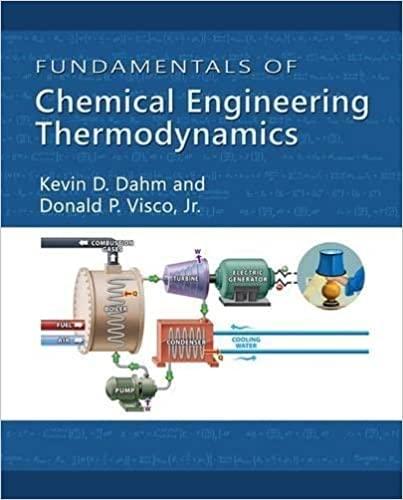You are designing a steady-state liquefaction process that will manufacture liquid methane. Part A of this problem
Question:
You are designing a steady-state liquefaction process that will manufacture liquid methane. Part A of this problem will focus on two unit operations: the flash separation step itself, and the counter-current heat exchanger in which the vapor from the flash chamber is used to cool the feed entering the flash chamber. In answering parts B and C, however, consider the entire Linde process, not just the two unit operations for which you performed calculations. Methane enters the counter-current heat exchanger as supercritical vapor at P = 1000 psia and T = –100°F. It is cooled and enters the flash chamber, where the pressure is reduced to P=10 psia. The flow rate of liquid methane product is 100 lbm/min. The methane vapor from the flash is sent to the counter-current heat exchanger. The design parameter that is under your control is the temperature of this methane vapor stream when it leaves the countercurrent heat exchanger—it can be –130, –120, or 110°F.
A. Find the flow rate of supercritical methane entering the counter current heat exchanger for each of the three possible systems.
B. Discuss the factors that you would expect to affect the cost OF THE EQUIPMENT ITSELF for the Linde process, and what the results of part A suggest about these costs.
C. Discuss the factors that you would expect to affect the cost of OPERATION of the process, and what the results of part A suggest about these costs.
Step by Step Answer:

Fundamentals Of Chemical Engineering Thermodynamics
ISBN: 9781111580704
1st Edition
Authors: Kevin D. Dahm, Donald P. Visco





